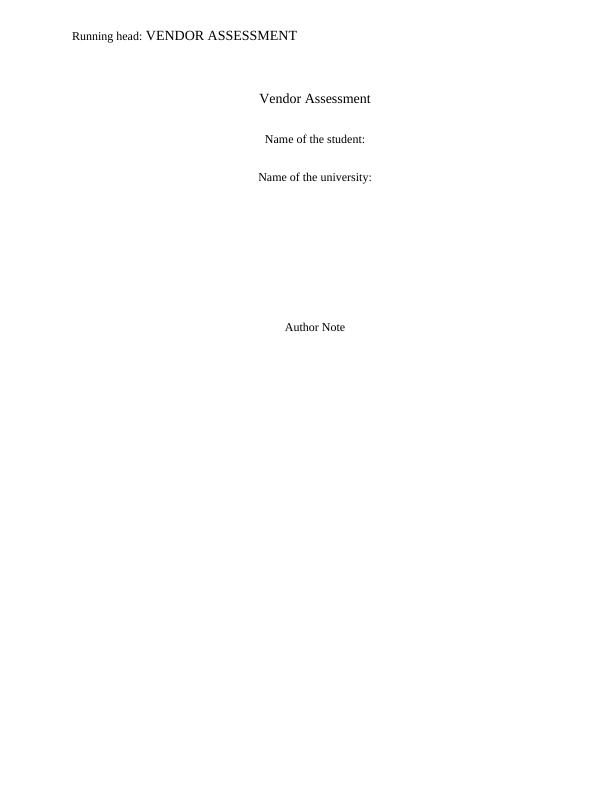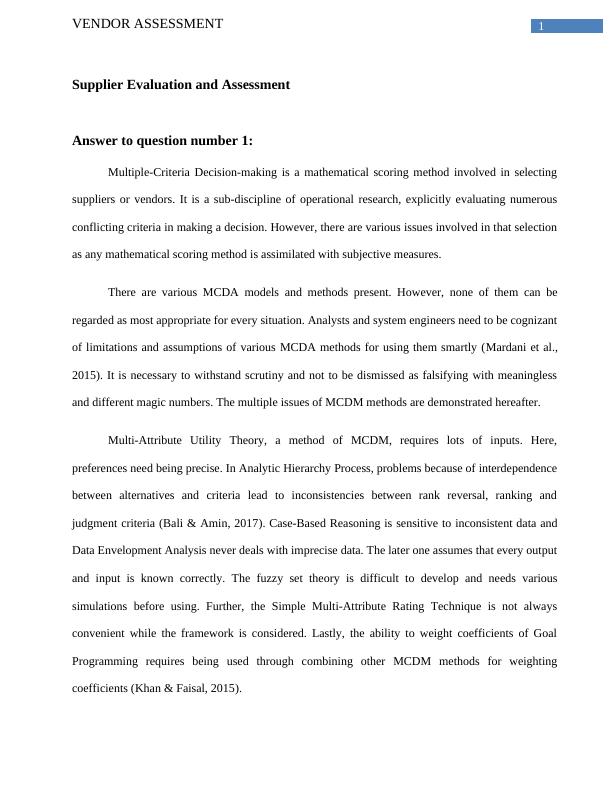Vendor Assessment: Supplier Evaluation and Assessment
6 Pages998 Words150 Views
Added on 2023-06-15
About This Document
This article discusses the multiple-criteria decision-making method for selecting suppliers or vendors and the issues involved in that selection. It also explains the importance of trust and trustworthiness in IT vendor selection and how to determine functionality matches. References are provided for further reading.
Vendor Assessment: Supplier Evaluation and Assessment
Added on 2023-06-15
ShareRelated Documents
End of preview
Want to access all the pages? Upload your documents or become a member.



